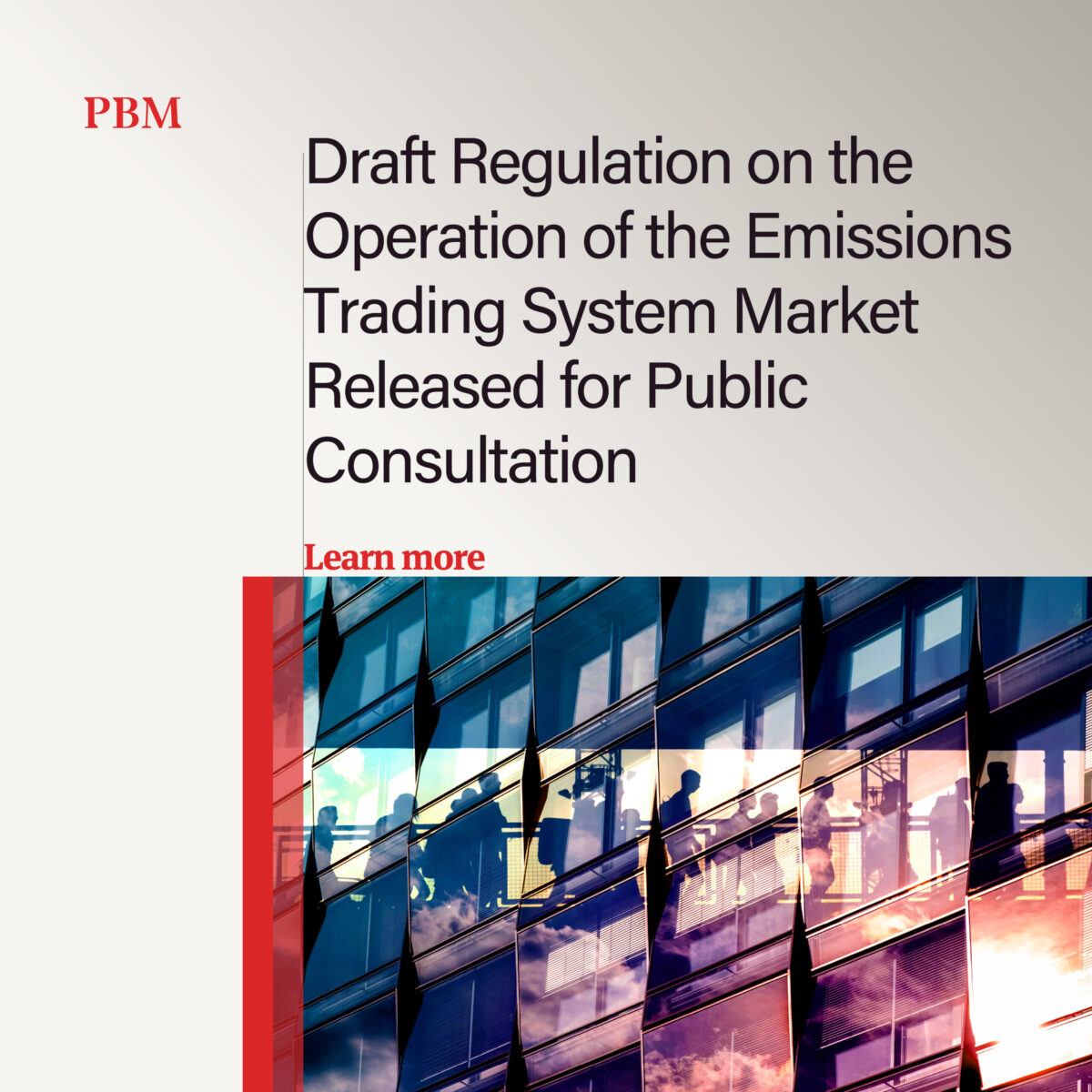Emisyon Ticaret Sistemi Piyasasının İşletilmesine İlişkin Yönetmelik Taslağı Kamuoyu Görüşüne Açıldı
November 12, 2025Yasa Dışı Çevrim İçi Bahis, Şans Oyunları ve Kumarla Mücadele Eylem Planı (2025–2026)
November 13, 2025
Draft Regulation on the Operation of the Emissions Trading System Market Released for Public Consultation
With the enactment of Law No. 7552 on Climate, Turkey has established the Emissions Trading System (“ETS”) as one of the key instruments for reducing greenhouse gas emissions, in line with its net-zero emission target, green growth vision, and climate change mitigation goals. In this context, on 23 October 2025, the Energy Market Regulatory Authority (“EMRA”) released the Draft Regulation on the Operation of the Emissions Trading System Market (the “Draft Regulation”) for public consultation
The Draft Regulation is prepared to set out the procedures and principles governing the establishment and operation of the Emissions Trading System market, which is designed to promote the reduction of greenhouse gas emissions and the Transaction Registry System (“TRS”).
- Emissions Trading System Market
Under the Draft Regulation, the ETS is defined as a national and/or international market-based mechanism that operates on the principle of setting an upper limit on greenhouse gas emissions in line with the net-zero emission target, and promotes emission reductions through the purchase and sale of allowances; whereas the ETS Market refers to the organized and regularly operated primary and secondary markets managed by the market operator, where allowances and/or other standardized contracts deemed suitable for emissions trading are traded.
Within the scope of the ETS, Enerji Piyasaları İşletme Anonim Şirketi (the “Market Operator”) will be responsible for operating two types of markets:
- Primary Market: The market in which allowances are distributed to undertakings through an auction mechanism.
- Secondary Market: The market in which distributed allowances are traded among participants.
All transactions will be conducted through the Emissions Trading System Market Management System (“ETSMMS”). The Market Operator shall carry out its activities in coordination with the Presidency of Climate Change (“Presidency”) and the EMRA.
- Transaction Registry System
To ensure the integrity of the ETS, the Market Operator shall establish and operate the TRS, an electronic data system through which the issuance, holding, transfer to another account, revocation, cancellation and redemption of allowances are carried out and monitored on a facility-by-facility basis.
Enterprises subject to the ETS are required to open an account within the TRS, and each enterprise shall conduct transactions on behalf of its facility or facilities registered under its name.
Allowances that are decided to be distributed free of charge in accordance with the ETS legislation shall be transferred through the TRS to the accounts of the relevant facilities of the market participants following the completion of the application and approval procedures before the Presidency. Free allowances may be transferred between a market participant’s own facilities and may also be traded in the secondary markets.
- Markets
The procedures and principles governing the markets defined under the Draft Regulation on the Emissions Trading System are elaborated in detail in this Draft Regulation.
- Primary Markets
Primary markets shall be operated by the Market Operator in accordance with the auction calendar determined by the Presidency. Allowances will be offered for sale through auctions in the annual quantities determined and will be distributed evenly across the auctions held throughout the year.
Upon the request of the Presidency, an additional reserve auction may also be organized; however, only participants deemed eligible will be allowed to participate in such an auction.
- Secondary Markets
Market participants will be able to conduct allowance trading transactions in the secondary markets operated by the Market Operator through a continuous trading mechanism. The secondary markets will consist of the spot allowance market and, if established, the forward allowance market.
The Draft Regulation also sets out the operational rules, trading sessions, order submission, and matching procedures applicable to these markets.
Bilateral agreements concerning the trading of allowances between market participants must be reported to the Market Operator. The Carbon Market Board will determine the implementation periods during which such bilateral agreements will be permitted.
- Financial Liability and Collateral
Market participants are required to provide collateral to ensure the continuity of cash flow in the market in cases where they fail to fulfill their obligations or operations, and to protect creditor participants in the event of delayed payments.
The types of assets that may be accepted as collateral, the methods and formulas for calculating collateral amounts, as well as the procedures for the return of collateral and settlement operations, are all set out in detail under the Draft Regulation.
- Other Provisions
Notifications to be made by the Market Operator under the Draft Regulation will primarily be carried out through the ETSMMS. In cases where the system is unavailable, notifications may be made via e-mail, telephone, or SMS. Any notices or invoices made outside the ETSMMS will be deemed valid if delivered in writing to the registered electronic mail (KEP) address of the relevant party.
Obligations relating to market-distorting conduct shall be fulfilled in accordance with the Regulation to be issued by the EMRA.
Until the TRS, primary market, and spot carbon market become operational, virtual simulations will be conducted on the ETSMMS without creating any delivery, invoicing, or payment obligations. However, bilateral agreements between market participants may not be executed during the pilot phase specified in the Regulation on the Turkish Emissions Trading System.
The Draft Regulation is open for public consultation until 13 November 2025 and will enter into force upon its publication in the Official Gazette.


